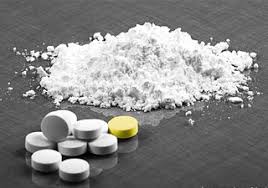
- +86-13363869198
- weimiaohb@126.com

Гру . 26, 2024 13:17 Back to list
Synthesis and Applications of 4,7-Dichloroquinoline in Pharmaceutical Research and Development
4,7-Dichloroquinoline An Overview
4,7-Dichloroquinoline is a compound that has garnered attention in various fields of chemical research and applications. With the chemical formula C9H6Cl2N, it is characterized by its quinoline structure, which is a bicyclic compound featuring a fused benzene and pyridine ring. This article provides an overview of 4,7-dichloroquinoline, focusing on its properties, synthesis, applications, and safety considerations.
Chemical Properties
4,7-Dichloroquinoline is a derivative of quinoline, and as its name suggests, it comprises two chlorine atoms positioned at the 4 and 7 positions of the quinoline ring. This chlorination introduces significant changes in both the chemical reactivity and the physical properties of the compound. 4,7-Dichloroquinoline typically appears as a yellow crystalline solid with a melting point around 53-55 °C. It is sparingly soluble in water but soluble in organic solvents like ethanol and dichloromethane.
The presence of chlorine atoms in the structure enhances the compound's ability to participate in electrophilic substitution reactions, making it a useful building block in organic synthesis. Furthermore, the nitrogen atom in the quinoline ring contributes to its basicity, allowing it to form various salts and complexes.
Synthesis
There are several methods for synthesizing 4,7-dichloroquinoline, and researchers often employ different strategies depending on the desired yield and purity. One of the most common methods involves chlorination of quinoline using chlorine or chlorinating agents under controlled conditions. Alternatively, it can also be synthesized through a multi-step process starting from commercially available 2-aminobenzyl chloride.
The synthetic routes chosen depend on various factors, including availability of starting materials, cost, environmental considerations, and the intended application of the compound. Optimization of synthetic methods is an ongoing area of research, with a goal to improve yields and reduce the environmental impact of the synthesis.
Applications
4,7-dichloroquinoline cas 86-98-6

4,7-Dichloroquinoline has a range of applications across several fields, including pharmaceuticals, agrochemicals, and materials science. In medicinal chemistry, it has been studied for its potential antimalarial properties, as well as for its activity against various types of cancer. The structural features of 4,7-dichloroquinoline enable it to interact with biological targets, making it a compound of interest for drug development.
In addition to its pharmacological applications, 4,7-dichloroquinoline is also explored as an agricultural chemical, where it may function as a pesticide or herbicide. The compound's ability to disrupt biological processes in target organisms can be harnessed for crop protection.
Moreover, researchers are investigating its role in developing advanced materials. The unique electronic properties associated with the chlorinated quinoline structure allow it to be used in organic electronics, including organic light-emitting diodes (OLEDs) and organic photovoltaics (OPVs).
Safety and Handling
While 4,7-dichloroquinoline has promising applications, it is essential to handle it with caution. The compound may pose health risks, such as skin and eye irritation, and potential toxicity if ingested or inhaled. Proper handling procedures should be followed, including the use of personal protective equipment (PPE) such as gloves, goggles, and lab coats. It should be stored in a cool, dry place, away from incompatible substances and direct sunlight.
Additionally, as with many chemical compounds, environmental impact assessments are crucial. Research into the biodegradability and toxicity of 4,7-dichloroquinoline is ongoing, helping to ensure that its use does not adversely affect ecosystems.
Conclusion
In summary, 4,7-dichloroquinoline is a significant chemical compound with diverse applications in health, agriculture, and materials science. Its unique chemical properties and potential for further development highlight its importance in ongoing research and industry. As we advance in our understanding of this compound, careful consideration of safety and environmental impact remains paramount. The future research endeavors involving 4,7-dichloroquinoline promise exciting possibilities in various fields, paving the way for innovative solutions and advancements.
-
Premium Pharma Intermediates | AI-Optimized Synthesis
NewsAug.03,2025
-
GS-441524 White Liquid Production for Factories | AI-Optimized
NewsAug.02,2025
-
AI-Optimized CAS: 79099-07-3 Factories for High Yield
NewsAug.01,2025
-
Premium CAS 1451-83-8 Factory with GPT-4 Turbo | AI-Optimized
NewsJul.31,2025
-
Pharmaceutical Intermediates - AI-Optimized Synthesis & Purity
NewsJul.31,2025
-
Top CAS: 79099-07-3 Factories & Wholesale Supplier from China
NewsJul.30,2025